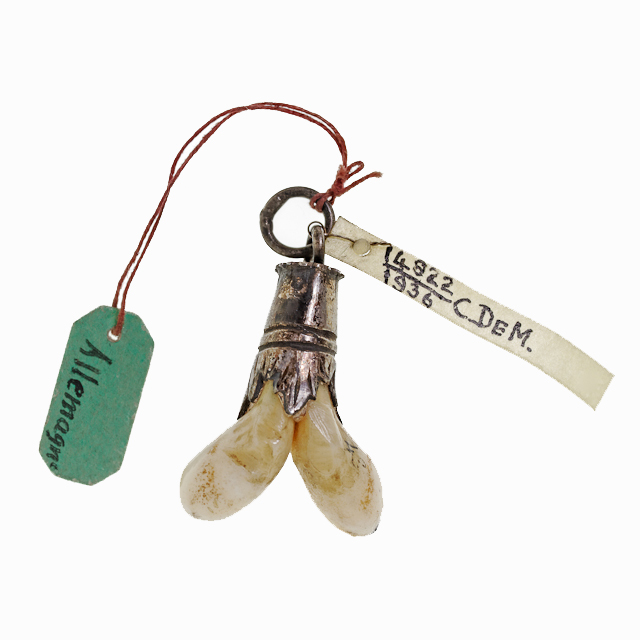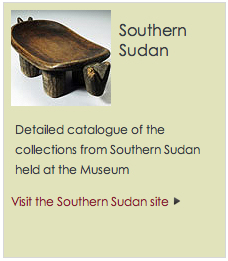Deer Teeth, Germany

Transferred from the Wellcome Institute in 1985; 1985.52.21
This pendant is made from a pair of stag’s canine teeth, which have been mounted in silver. Jewellery set with hirschgrandln (deer teeth) was very popular in 19th century Germany, and is still being made today. It is possible that this one was made in Schwäbisch Gmünd, a small town in southern Germany that was the main centre of silver craft and jewellery production in the region in the 19th century.
One of the most famous pieces of deer teeth jewellery is the gold and enamel necklace that Prince Albert, who was born in Bavaria in southeastern Germany, gave to Queen Victoria in 1860. It contains 44 teeth from stags that he had hunted on the royal estate at Balmoral, each one inscribed with the date on which the animal had been shot.
Deer teeth are also part of traditional Bavarian dress. Together with other small hunting trophies made of animal horns, bones, and paws, as well as coins and amulets decorated with pictures of saints, they are hung on a charivari (a chain) and worn by men and women around the waist, or hung on a hat to bring good luck in hunting.






